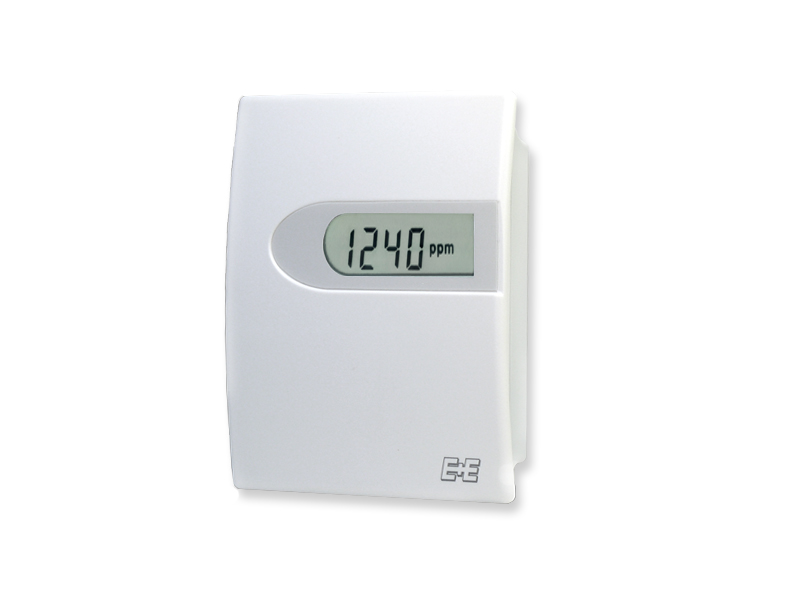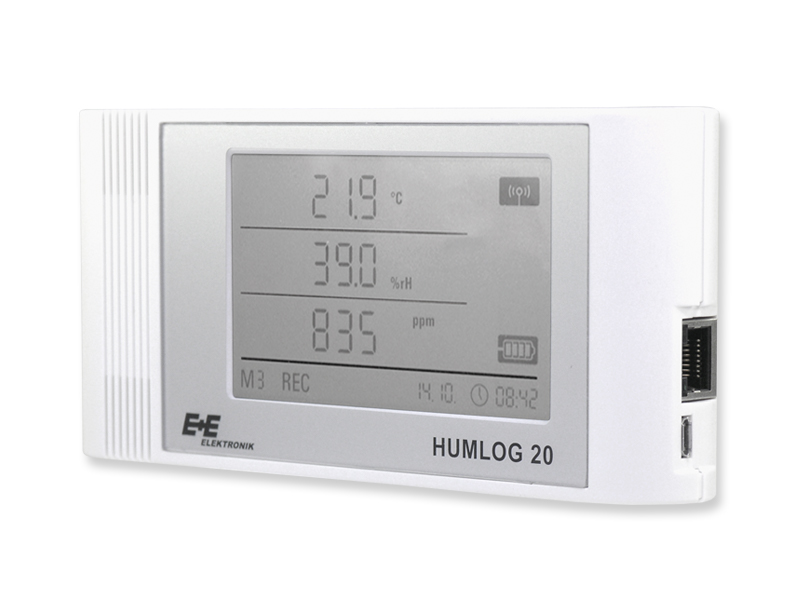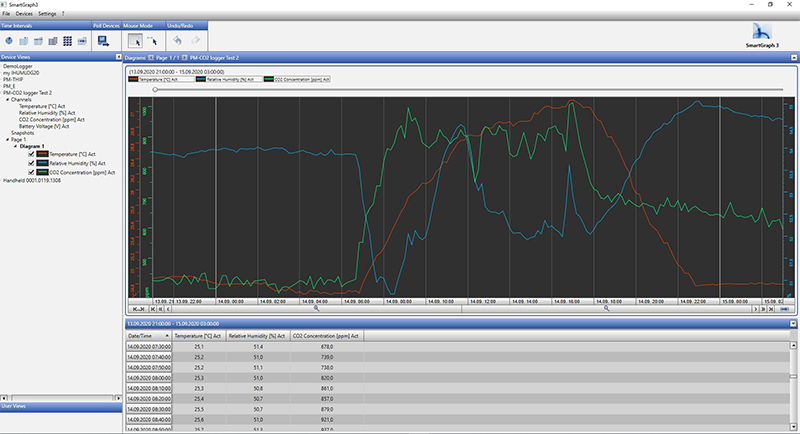Not Only in Times of Corona – CO₂ Sensors Ensure a Good Indoor Atmosphere

Factors for a Good Indoor Atmosphere
In addition to the right temperature and humidity, the CO2 concentration in the indoor atmosphere is particularly important for our well-being indoors. In closed rooms with an insufficient supply of fresh air, the CO2 concentration quickly rises to a high level. Since CO2 is produced when we exhale, the more people there are in a room, the faster the CO2 content in the room air increases. Starting at a CO2 concentration of 0.1% by volume (1000 ppm), the tasteless and odourless gas has a negative effect on our well-being, performance and concentration. Often the ventilation system is only switched on when the indoor atmosphere is perceived to be stuffy or used up and this limit value has already clearly been exceeded. For comparison: fresh outside air has a CO2 content of about 400 ppm.
COVID-19 – Ventilation Minimises Risk of Infection
Prompted by the Corona pandemic, indoor ventilation has taken on additional importance. Since the Corona virus can also spread via aerosols, based on current knowledge, experts recommend ventilating rooms regularly. The higher the proportion of fresh air, the lower the aerosol concentration in the indoor atmosphere. This also reduces the risk of infection from potentially viral particles.
Indoor Atmosphere Monitoring with CO₂ Sensors
Even the use of simple CO2 measuring devices, also known as CO2 indicators, can significantly contribute to a better indoor atmosphere. The devices measure the CO2 concentration and provide information about how stale the air inside the room is and when the room should be ventilated. The use of CO2 indicators is a sensible course of action if installing a ventilation system is out of the question due to the structural conditions or for reasons of cost.
Demand Controlled Room Ventilation with the Aid of CO₂ Sensors
In modern buildings such as passive or low-energy houses, ventilation systems are now state-of-the-art. If they are to work in an energy- and cost-efficient way, CO2 sensors are needed to monitor the CO2 content of the room air precisely and reliably. Based on the measured CO2 values, the air supply can be regulated to reflect requirements.
In contrast to a building ventilation system with a constant volume flow, a ventilation system controlled by CO2 sensors supplies the room with the volume of fresh air actually required. This reduces heat loss through excessive ventilation, avoiding unnecessary heating costs. In addition, the power consumption of the fans in the ventilation system can be significantly reduced by speed-controlled ventilation.
CO₂ Sensors by E+E Elektronik
CO2 sensors from E+E Elektronik are ideal for indoor atmosphere and ventilation control. CO2 measurement is based on the non-dispersive infrared measuring principle (NDIR), the advantage of which is high contamination resistance. In combination with an auto-calibration procedure, the CO2 sensors offer precise measurement results with long-term stability. The CO2 measurement data form the basis for demand-driven ventilation control, and thus make an important contribution to a good indoor atmosphere.
CO₂ Room Sensor
Room sensors such as the EE800 not only measure the CO2 content in the indoor atmosphere, but also the relative humidity and temperature. The EE800 thus delivers two additional climate parameters relevant for the indoor atmosphere. The sensor is equipped with a Modbus RTU or BACnet MS/TP interface, which supports easy integration of the measurement data with a facility management system.

CO₂ Data Logger with Alarm Function
The Humlog 20 data logger is suitable for monitoring the CO2 concentration and other physical climatic quantities such as humidity, temperature and air pressure. The device not only acquires the measured data but also alerts in case of, for example, the CO2 content of the indoor atmosphere reaching a defined value. The device can be configured and the measurement data evaluated easily and in a straightforward way using the SmartGraph3 software.


